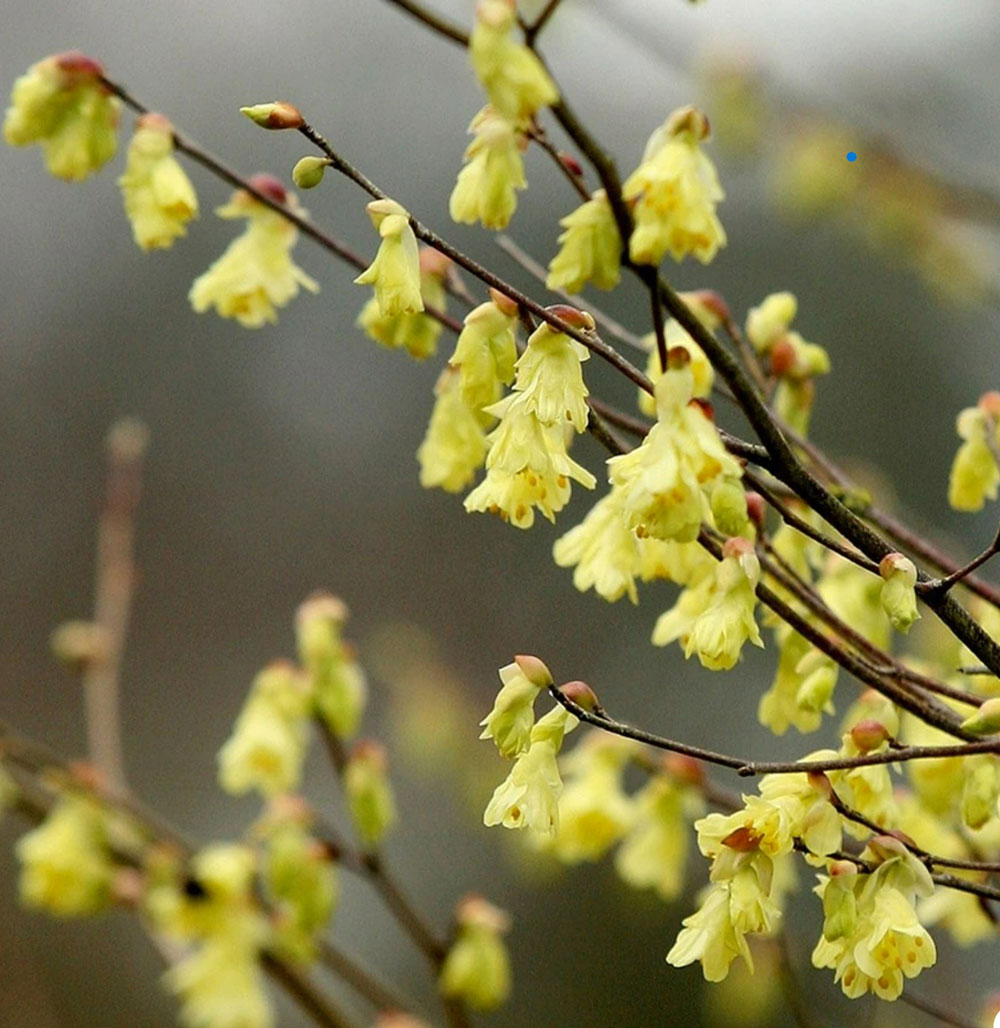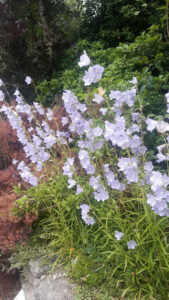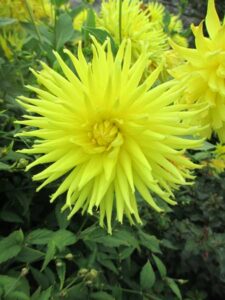Gardening
with Charlie Wilkins
THE APRIL GARDEN
I have often likened gardening to a selection box of chocolates: the more you delve, the more you discover what surprises lie under each layer of dark, corrugated, crinkly paper! The one thing I dislike of course is the paltry few of my favorites: the Turkish delights, the orange and coffee creams, the wickedly delicious strawberry cups! I know that the road to sheer indulgence is not paved entirely with hazelnut clusters either but the manufacturers should try a little harder at getting the correct mix!
Until then, let’s look at something eye-catching in the April garden. Now a spring garden without scent is simply unthinkable. so we must have plants to entertain our noses at every turn Corylopsis will fill the bill handsomely during early April when its soft yellow to pale primrose, cup-shaped flowers, hang in tassels from bare branches and these smell sweetly of cowslips. Well, mine smells of cowslips anyway, even though it is named Corylopsis “willmottiae” which grows to six feet. In a small garden, this variety or or “pauciflora” will come to perfection and be no bother to look after.
All varieties will withstand a little lime in the ground but above all, the family likes to be kept moist and cool during summer and this kind of arrangement is easily catered for here in Glanmire. Give it the kind of soil and situation that suits azaleas or rhododendrons and you will have a friend for life coming up trumps during every spring that you are around to see it. In fact it is usually seen growing among azaleas and the like, and in many instances it looks better than the palest and coolest forms of these.
As a member of the Hazel family, this shrub comes into bloom just as the blooming period of the Witch Hazels comes to an end but it always surprises me as to why it is not as popular as the Witch Hazels themselves. Perhaps the reason is because Corylopsis is not reliably hardy in very cold areas (especially in Britain) and the blooms are often damaged by late-night frosts and biting easterly winds. In such cold areas the plant is best placed in light shade where the overhang from bigger subjects gives just the kind of protection it so evidently needs.
TIP: Come the month of September, buy a bag (no less, for they are relatively cheap) of sky-blue, Muscari “armenicum” for these will bloom at the same time giving you the most wonderful colour contrast in the spring garden. You will thank me in the years ahead for such a suggestion.

A MUST FOR RAINY AREAS
Primulas I do like, especially the old-fashioned forms such as those known as ‘laced’ primulas and all double kinds in traditional yellow, even the sky blue varieties now sold everywhere. They remind me of West Cork where the traditional yellow forms grow ‘wild’ and free in gardens high above the roadsides. I used to have a few good clumps but they slowly failed through winter rot. In recent years I have revived just a few, and I guard them determinedly. Success I believe has been achieved in high rainfall areas through the generous use of sharp grit, horticultural grit to be precise, a medium which has a benevolent and healing influence on everything it touches; bulbs, perennials, pot plants, and tender trees and shrubs which insist on sharp drainage and a place sheltered from excessive winter wet.
No gardener I reckon should be without a decent mound or bag of sharp grit, for its uses are truly manifold. As you work it through potting compost or mix it into planting holes notice its wonderful scrunch, its sharp cleanliness, its ability to melt into the medium to create a welcoming, free-draining home for just about everything. All bulbs, corms and tubers will benefit from a generous fistful or two placed directly beneath their basal plates. This applies especially to all varieties of lily, to tulips and choice alpines planted this month of April.
This kind of wonderful grit may be produced in Co. Roscommon by the Glenview people but its heavenly stuff to use in and around the garden. It may well be a by-product of quarried stone, but one surely finely ground by the angels for use by mortal gardeners here on earth. Ordinary road grit just isn’t the same. It doesn’t even come near the feel or the alchemy of sharp grit nor does it give you the same kind of sensual pleasure as it slips between your fingers. No, horticultural grit I assure you, is best only when sharp, and the sharper the better.
Use it throughout winter in composts in which to strike hardwood cuttings or try it in similar mediums during May through to August as you insert softwood tips. Mix it with everything you plant between now and mid-summer. Use it in the greenhouse on trays which hold over-wintering plants or top dress these same plants so that green algae and slime (not to mention liverwort) will be unable to gain a foothold. Lay a mound of sharp grit around hostas and delphiniums to deter slugs and snails or use it to lighten the most stubborn sticky clay. You can even use it as a clean protective mulch safeguarding your choicest stock from excess wet and cold next winter. Use it also to mark their positions as they sleep deep beneath the cold soil. Magical is surely the correct word for this heavenly material. ‘Hillside and Dooleys have stocks ready now.








